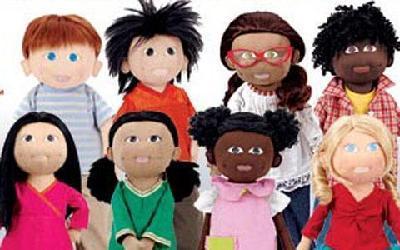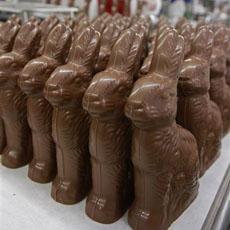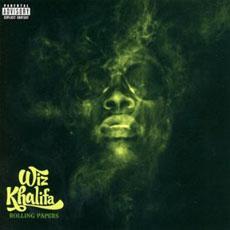
DOUG JOHNSON: Welcome to AMERICAN MOSAIC in VOA Special English.
(MUSIC)
I'm Doug Johnson. This week, on our program we play new music by hip-hop artist Wiz Khalifa...
We answer a question about Easter celebrations in the United States...
But first we tell about two New York-based businesswomen and the products they created for children.
(MUSIC)
Brownstone Buddies
DOUG JOHNSON: The United States is often called the "great American melting pot." That is because of the many nationalities, ethnic groups and cultures that make up America. It is the most culturally diverse country in the world. One company is celebrating that diversity through a line of cloth dolls called the Brownstone Buddies. The dolls are designed to help teach young children about other cultures. Faith Lapidus has more.
FAITH LAPIDUS: New York has the largest population of any American city. More than eight million people live there. Brooklyn is the most populated area of New York, and one of its most culturally diverse.
The United States Census Bureau says Brooklyn is home to 93 different ethnic groups and 150 nationalities. This cultural diversity is one of the things that "Brooklynites" say they love most about their community. It is also what led to the creation of the "Brownstone Buddies."
Janai Nelson and Crystal Granderson-Reid thought of the idea for the dolls during a play date for their children. Janai Nelson says the two of them learned that they shared the same ideas about raising children.
JANAI NELSON: "We both are extremely interested in raising our children with a world outlook and a global view. And we just didn't see anything out there that they could embrace and see a reflection, not only of themselves, but also of the world at large.
The two women decided to develop a line of dolls that looked more like their children, and their children's friends. They developed eight "Brownstone Buddies" in all. The dolls represent different cultures and are said to have different interests. Some were purposely designed to fight old stereotypes.
JANAI NELSON: "Each of the characters has a unique characteristic that we think is not often represented by their ethnicities, broadly speaking, in the media."
One of the dolls is an Asian-American boy who loves sports. Another is a Latin American girl who loves to read and tell stories. There also is an African American girl who loves mathematics.
In 2006, the two women entered their creations in a competition at New York's leading toy store, FAO Schwarz. The store is famous for offering interesting and unusual toys. The "Brownstone Buddies" were chosen as a finalist among more than 200 toys. Janai Nelson says the dolls are a perfect reflection of the "great American melting pot," but without the melting.
JANAI NELSON: "It in some ways challenges this melting pot idea and makes it more of a lovely stew, where each ingredient is still whole and firm and full of its own unique flavor and identity.
Janai Nelson says she hopes the dolls will help children to love who they are and the special qualities they have. She and her partner hope to expand the "Brownstone Buddies" product line to include books and other media. They also have plans to add more dolls in the future.
Easter in America
DOUG JOHNSON: Our question this week is about the Christian holiday of Easter. That is when Christians celebrate the life of Jesus and his return from the dead. For most Christians, Easter, this year, is on Sunday, April 24th.
Our question comes from Belgium. Christian wants to know how Americans celebrate Easter. He notes an interesting Easter tradition in France, where many Roman Catholics live. Churches in France do not ring their bells on the two days before Easter Sunday. The bells are silenced in respect of the death of Jesus. They ring again on Easter Sunday, the day Christians believe he came back to life.
French children are told a story about why the bells are quiet on Good Friday and the next day. Parents say the bells have flown to Rome to see the head of the Roman Catholic Church. But on Sunday morning, the bells return and ring again.
In America, many children are told stories about the Easter Bunny. He is said to bring eggs, chocolates and other sweets, and hides them for children to find on Easter morning.

The Easter Bunny tradition probably developed from a German celebration of spring. Germans first settled in North America in the 18th century. They celebrated the Goddess of Spring, Eostre. Ancient images of Eostre show her carrying eggs and young bunnies. Eggs are an almost worldwide symbol of birth. The young animals represent the ability to reproduce, to make new life.
Individual families often organize Easter egg hunts. But egg hunts can also be public gatherings. In New York City, one Brooklyn neighborhood is holding such an event for a seventh year. On Saturday, the Brooklyn Bridge Park will welcome children and their families for an egg hunt. Other activities include face painting, egg decorating, music and storytelling.
Children in America might also enjoy a movie this Easter Sunday. Hollywood released "Hop" just in time for the holiday. It tells the story of E.B., the teenage son of the Easter Bunny. E.B. runs away to Hollywood, where he hopes to become a rock and roll musician. Here, he talks with a human friend, Fred.
(SOUND "Hop")
E.B.: "No you're right. It's not your concern. And in two weeks maybe you can explain to the children of the world why they didn't get their Easter baskets."
FRED: "Easter."
E.B.: "Oh, yes, Fred. I am the Easter Bunny."
FRED: "Hop in."
Many Christians in America attend religious services on Easter Sunday.
There are also non-Christian holy days around this time of year. Jews observe Passover, for example.
This year, none of the major Muslim holidays are close to Easter or Passover. But that will change in future years because Muslim holidays follow the Islamic calendar.
Wiz Khalifa
DOUG JOHNSON: Wiz Khalifa has been recording music for several years. But his new album, "Rolling Papers," has outsold his earlier albums by well over 100,000 copies. Katherine Cole has more about the hip-hop artist and his new album.
(MUSIC "Black and Yellow")
KATHERINE COLE: That is "Black and Yellow" from Wiz Khalifa's album "Rolling Papers." The song honors his hometown of Pittsburgh, Pennsylvania. Black and yellow are the colors of the city's football team, the Pittsburgh Steelers.
Wiz Khalifa is not a Pittsburgh native. He was born in the city of Minot, North Dakota in 1987. His parents were in the military and the family left Minot when he was still a baby.

Wiz Khalifa lived in Germany, England and Japan as a child. He says moving around helped him learn to enjoy different things. He says his music has a worldwide sound. Here he performs "Wake Up" from the new album.
(MUSIC)
Wiz Khalifa's unusual name was not given to him by his parents. He was born Cameron Thomaz. His family called him Wiz because everything he tried he did well. His grandfather is Muslim so he took an Arabic word for the rest of his stage name. Khalifa means successor or leader.
In "When I'm Gone," Wiz Khalifa tells about the temporary nature of life.
(MUSIC)
We leave you with "Fly Solo" from Wiz Khalifa's album "Rolling Papers."
(MUSIC)
DOUG JOHNSON: I'm Doug Johnson. Our program was written by June Simms and Caty Weaver, who was also the producer.
Join us again next week for music and more on AMERICAN MOSAIC in VOA Special English.
Easter bear brings candy for kids
Obama welcomes children to White House Easter Egg Roll
(来源:VOA 编辑:崔旭燕)
